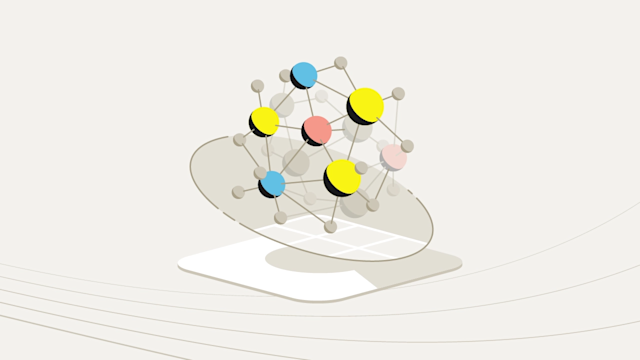Introduction to distributed NoSQL databases
Learn how distributed NoSQL databases manage big data with horizontal scaling, flexibility, and high availability.
It goes without saying that managing large datasets requires databases that can handle them efficiently. Distributed NoSQL databases are designed for this. Unlike traditional SQL databases, which rely on structured, tabular data and vertical scaling, NoSQL databases process unstructured data across horizontally scaled distributed systems, offering a more scalable and flexible solution for many high-performance applications.
What are distributed NoSQL databases?
A distributed NoSQL database has two parts, so let’s discuss the distributed part first. Scalability is critical in nearly any business application. As applications grow and user demands increase, a database needs to scale with those demands.
A distributed database spreads data across multiple servers, otherwise known as horizontal scaling — the ability to add more machines to the system to handle more data and traffic. This architecture helps businesses dealing with big data and real-time applications,
In contrast, traditional databases typically achieve this through vertical scaling, which involves upgrading the hardware of a single machine. Consequently, traditional relational databases sometimes struggle to keep up with the volume, velocity, and variety of incoming data in some use cases.
Think of a traditional relational database like just one refrigerator in your house. It’s usually fine, but in times of heavy use, such as holidays or parties, it gets too full to use, plus too many people are trying to get into it at once. You can buy a bigger refrigerator, but ultimately, there’s only so much space in the kitchen to hold refrigerators. In contrast, a distributed NoSQL database is like putting another refrigerator in your garage that can hold party supplies, holiday leftovers, etc. The refrigerators share the load, so when use increases, you still have enough refrigerator space and fewer traffic problems in the kitchen.
In addition, distributed systems handle failures without data loss using replication. Data is replicated across nodes, meaning even if one server goes down, others can maintain the system’s operations. This architecture lets high availability databases meet business demands for near-constant uptime and real-time data access.
Overview of NoSQL database types and their use cases
Not all NoSQL databases are the same, and different types are suited to different use cases. They manage different types of data models, such as key-value, document, column-family, and graph.
This flexibility makes them better suited for applications where data formats change frequently or need to be stored in a non-relational format. For example, many NoSQL systems allow a flexible schema approach instead of rigid, pre-defined schemas like those in SQL databases. This adaptability means you can add different data types as your needs change without requiring extensive changes to the database structure, saving time and reducing development costs.
Each type of NoSQL database has its strengths and weaknesses, depending on the specific requirements of the application.
Here's a quick overview:
Key-value databases: A key-value database is a simple database in which the key is represented by an arbitrary string, such as a filename, URI, or hash, and the value can be any type of data, such as an image, user preference file, or document. They are best suited for scenarios where data is stored and retrieved based on a unique key, such as high-performance caching and session management.
Document databases: Store, retrieve, and manipulate flexible, document-oriented (also known as semi-structured) information, such as JSON-like documents). Document data means every object in the database can have a unique structure, so users can add new objects without changing the entire database.
Column-family databases: This style of database is best suited when data resembles a spreadsheet, with components such as analytics and time series data. It’s designed for quickly reading and writing large volumes of data and is often used in big data analytics.
Graph databases: A graph database stores and organizes data in a graphical format that describes the relationships (edges) between data points (nodes). The relationships between nodes are stored in the database. They are used for applications where relationships between data points are critical, such as social networks or recommendation engines.
Comparing distributed NoSQL databases with traditional RDBMS
Relational databases (technically known as relational database management systems, or RDBMS) have long been the default for managing structured data, such as financial transactions. They provide consistency and strong transactional guarantees, but this often comes at the cost of scalability and flexibility. Frequently, RDBMS use structured query language (SQL) to define and manipulate data, which is why they’re sometimes called SQL databases. However, traditional relational databases often face significant limitations when scaling across distributed environments.
(Incidentally, “NoSQL” doesn’t mean “not SQL.” It means “not only SQL.” Many NoSQL databases actually handle SQL.)
In contrast, distributed NoSQL databases emphasize scalability, flexibility, and performance. One of the ways some of them achieve this is by relaxing some of the strict consistency models relational databases use. Instead, they adopt an eventual consistency model, which prioritizes availability and partition tolerance (the ability to continue working even if the connection between two nodes is temporarily broken) over immediate consistency. The CAP theorem explains these trade-offs, stating that you only get two out of three in distributed systems: consistency, availability, or partition tolerance. Distributed NoSQL databases often lean toward availability and partition tolerance, making them ideal for use cases such as real-time analytics, IoT, and social media, where data must be processed at scale and speed.
Data modeling and management in NoSQL databases
Data modeling in NoSQL databases differs from traditional relational databases. The schemaless architecture of NoSQL systems is more flexible, making them better suited for applications with dynamic and unpredictable data structures. In NoSQL systems, data modeling and management strategies influence the database's scalability, performance, and reliability. Effective data modeling, combined with horizontal scaling, means a distributed NoSQL database meets the requirements of real-time, large-scale applications while maintaining high availability and efficient resource use.
Let’s get into that in more detail.
How data modeling in NoSQL differs from traditional databases
Traditional relational databases use predefined schemas that structure data into rows and columns. While this is convenient for handling structured data, this rigidity makes it difficult to handle large volumes of unstructured or semi-structured data, which has become common in modern applications.
In contrast, NoSQL databases like Aerospike allow for a flexible schema, which stores data in the varying data models discussed earlier: key-value pairs, documents, or columns. This flexibility means organizations adapt more quickly to changing data needs without overhauling their database structure.
For example, in document-based NoSQL systems, each document can have a different structure, allowing businesses to store data in a more natural format. This is particularly useful for applications with diverse datasets, such as user-generated content, social media, or e-commerce. Handling different data formats without restructuring the entire database makes these applications more flexible.
Comparing NoSQL database solutions
Consequently, choosing the right NoSQL database solution is important for organizations looking to scale data operations and meet the demands of today’s applications. Different NoSQL databases offer unique strengths depending on the use case, from high-performance read and write operations to handling large-scale, distributed systems. Which one you choose depends on your application’s requirements.
Factors to consider when choosing a NoSQL database
Selecting the right NoSQL database for a given use case means evaluating several other factors in addition to data model flexibility. These include performance, scalability, consistency, and cost efficiency. When choosing a NoSQL database, businesses should consider the following criteria:
Performance
Industries that require low-latency data access, such as AdTech, financial trading, or real-time analytics, benefit from database architectures that use hybrid memory systems and efficient data partitioning strategies. A hybrid memory system stores the index purely in memory, not on disk. Data is stored only at persistent storage (SSD) and read directly from the disk. Because disk I/O is not required to access the index, performance is more predictable. Systems designed with low-latency access in mind maintain high-speed data reads and writes even under heavy loads, making them preferable for real-time operations.
Scalability
The ability to scale is a core requirement for most of today’s applications. In addition to the distinction between vertically and horizontally scalable databases, databases with built-in automatic data replication and partitioning provide smoother scaling, maintaining performance as the system grows. However, some databases may require additional tuning and infrastructure to achieve the same performance at scale, which adds operational cost.
Consistency
Depending on the application, businesses will likely need to decide whether to prioritize strong consistency or eventual consistency. Strong consistency means all nodes reflect the same data immediately after a transaction, which is essential for applications requiring strict data accuracy, such as financial transactions. Eventual consistency is more suited to applications where high availability and performance are prioritized over immediate data synchronization across nodes, such as in social media or real-time recommendations. Choosing the right consistency model depends on the application's specific needs and how critical immediate data accuracy is.
Cost efficiency
Cost efficiency is an important consideration as applications scale. Systems that use a combination of in-memory indexing and disk-based storage, such as SSDs, offer higher performance but cost less than fully in-memory solutions. This balance makes it a more viable option for applications that require both speed and cost-conscious infrastructure. Additionally, databases that optimize resources with smart load balancing and efficient storage management can further reduce operational costs and improve performance and reliability.
Aerospike’s role in distributed database solutions
Aerospike is a high-performance, distributed NoSQL database designed to handle large amounts of real-time data with low latency. Its patented architecture addresses scalability, high availability, and data performance, making it an ideal choice for enterprises needing fast and efficient data processing at scale.
How does Aerospike improve distributed NoSQL database performance?
At the core of Aerospike’s high performance is its Hybrid Memory Architecture, which combines in-memory and flash storage technologies. This architecture lets Aerospike store indexes in memory while using high-performance SSDs for data storage, improving data read and write speeds. This results in low-latency access to data, which is required for real-time financial services, ad tech, and telecommunications applications.
In a distributed system, such as an RDBMS, storage hardware limitations can degrade performance. Aerospike's hybrid approach means applications retrieve data without delays associated with spinning-disk-based storage. Furthermore, the distributed system can easily handle multi-terabyte datasets or more.
Aerospike’s unique features and scalability
One of Aerospike’s standout features is its ability to scale horizontally, allowing organizations to add more nodes to the cluster as their data needs grow. Aerospike supports horizontal scaling, which ensures that as the data volume increases, the system continues to perform efficiently without bottlenecks. Aerospike’s Hybrid Memory Architecture enables efficiency and low-latency performance compared to other distributed NoSQL databases – TransUnion’s Signal slashed TCO 68% over three years, replacing 450 Cassandra servers with just 60 Aerospike servers. In addition, Aerospike’s automatic data partitioning and replication distribute data evenly across nodes in the cluster, further improving performance.
In addition, Aerospike’s Cross Datacenter Replication (XDR) feature lets the database synchronize data across multiple geographical locations, resulting in high availability and disaster recovery. Replicating data across multiple nodes and data centers helps provide high availability even if one or more nodes fail. This built-in redundancy allows Aerospike to offer 99.999% availability, meeting the needs of mission-critical applications that require uninterrupted service.
With its focus on minimizing downtime and maintaining data integrity across distributed environments, Aerospike is ideal for global businesses like Inmobi and Nielsen’s Marketing Cloud, which must maintain uptime and performance.
Aerospike supports both kinds of consistency
Aerospike's support for both strong consistency and eventual consistency models lets businesses configure the database based on their specific use cases. For applications where immediate consistency is required (such as financial transactions), Aerospike can enforce strong consistency. For other scenarios where availability and performance take precedence, eventual consistency means the system continues to perform efficiently while gradually synchronizing data across nodes.
Distributed NoSQL databases transform data management for high-performance computing
In high-performance computing environments, traditional relational databases often struggle to meet the demands of modern applications, particularly when it comes to handling unstructured data at scale. Distributed NoSQL databases, on the other hand, are designed to handle large-scale data environments by offering flexible schema designs, eventual consistency models, and horizontal scaling capabilities. This means businesses can process large amounts of data efficiently, making real-time decisions without sacrificing performance or reliability.
Distributed systems, like Aerospike, distribute data across multiple nodes, meaning data remains available even during node failures or network partitions. Replicating data across regions makes these databases essential for disaster recovery strategies for businesses that require uninterrupted service.
Why Aerospike is a preferred choice for supporting large-scale applications
Aerospike stands out in the crowded NoSQL database landscape due to its unique features that provide real-time data processing at scale. Its Hybrid Memory Architecture optimizes both performance and cost by using in-memory indexes and SSD storage for data, offering the speed of in-memory solutions without the high expense. Additionally, Aerospike’s support for Cross Datacenter Replication means businesses can maintain high availability and global data synchronization, making it an excellent choice for applications that require real-time, fault-tolerant data management.
Aerospike's flexibility in supporting both strong consistency and eventual consistency allows businesses to configure their database based on their needs. Aerospike supplies the required data accuracy for industries that require immediate consistency, such as financial services or e-commerce, while still providing high performance and scalability.




